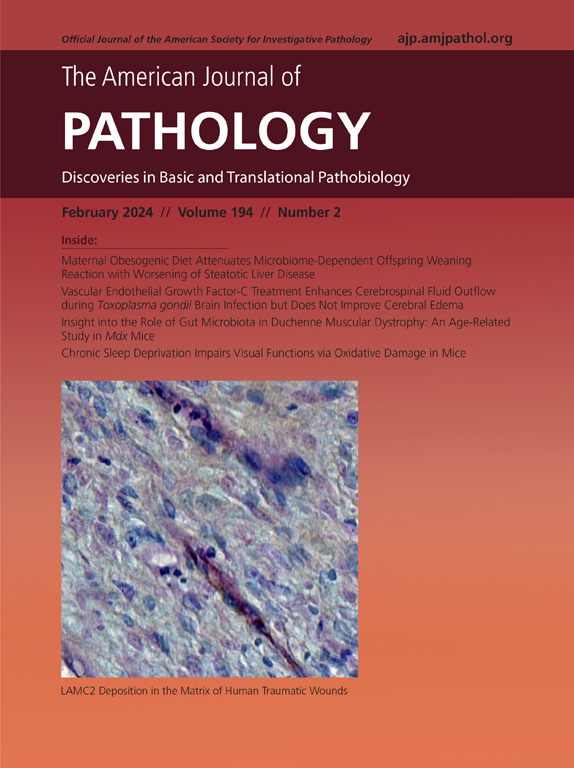从单一癌症到泛癌症预后:具有鲁棒泛化能力的多模态深度学习生存分析框架。
IF 3.6
2区 医学
Q1 PATHOLOGY
引用次数: 0
摘要
准确的预后是肿瘤学研究的一个重要组成部分,可以实现个性化的治疗计划,并优化医疗保健资源的利用。虽然现有的预后模型在有限的数据集上表现出了良好的性能,但它们仍然受到两个限制的制约:模式特定的架构设计和癌症类型特定的训练范式,这阻碍了跨领域的泛化。为了应对这些挑战,我们推出了统一多模式泛癌症生存网络(UMPSNet),该网络通过结构化文本模板集成了组织病理学图像、基因组表达谱和四种元数据类别。UMPSNet采用基于最优传输(OT)的多模式特征对齐关注和专家指导混合(GMoE)机制来解决癌症类型分布转移。跨越5个TCGA队列的3,523张全幻灯片图像(wsi) (n=2,831)的综合评估显示出优越的预测性能(平均c指数=0.725),优于精心设计的单一癌症模型。值得注意的是,在涉及北京大学第三医院392例胰腺腺癌wsi (n=66)的零注射转移评估中,UMPSNet在没有参数微调的情况下实现了0.652的c指数,显示了对以前未见过的恶性肿瘤的泛化能力。此外,UMPSNet还发现了与临床检测到的突变一致重叠的预后基因特征(n=92),同时揭示了新的候选基因,验证了其临床相关性,并为精确肿瘤学提供了补充见解。UMPSNet框架通过克服数据异质性和领域转移挑战,为多模态生存分析建立了新的范式,从而为泛癌症预后预测提供了临床适应性工具。本文章由计算机程序翻译,如有差异,请以英文原文为准。
From Single-Cancer to Pan-Cancer Prognosis
Accurate prognosis represents a critical component in oncology research, enabling personalized treatment planning and optimized health care resource use. Although existing prognostic models demonstrate promising performance on restricted data sets, they remain constrained by two limitations: modality-specific architectural designs and cancer type–specific training paradigms that hinder cross-domain generalization. To address these challenges, the Unified Multimodal Pan-Cancer Survival Network (UMPSNet) was introduced, which integrated histopathology images, genomic expression profiles, and four metadata categories through structured text templates. UMPSNet used the optimal transport–based attention for multimodal feature alignment and a guided mixture of expert mechanisms to address cancer-type distribution shifts. Comprehensive evaluation across 3523 whole slide images (n = 2831) spanning five The Cancer Genome Atlas cohorts demonstrated superior predictive performance (mean concordance index = 0.725), surpassing meticulously designed single-cancer models. Notably, in zero-shot transfer evaluation involving 392 pancreatic adenocarcinoma whole slide images (n = 66) from Peking University Third Hospital, UMPSNet achieved a concordance index of 0.652 without parameter fine-tuning, demonstrating generalization capacity for previously unseen malignancies. Additionally, UMPSNet identified prognostic gene signatures that consistently overlapped with clinically detected mutations (n = 92) while revealing novel gene candidates, validating its clinical relevance and providing complementary insights for precision oncology. Thus, the UMPSNet framework established a new paradigm for multimodal survival analysis by overcoming data heterogeneity and domain shift challenges, thereby providing a clinically adaptable tool for pan-cancer prognostic prediction.
求助全文
通过发布文献求助,成功后即可免费获取论文全文。
去求助
来源期刊
CiteScore
11.40
自引率
0.00%
发文量
178
审稿时长
30 days
期刊介绍:
The American Journal of Pathology, official journal of the American Society for Investigative Pathology, published by Elsevier, Inc., seeks high-quality original research reports, reviews, and commentaries related to the molecular and cellular basis of disease. The editors will consider basic, translational, and clinical investigations that directly address mechanisms of pathogenesis or provide a foundation for future mechanistic inquiries. Examples of such foundational investigations include data mining, identification of biomarkers, molecular pathology, and discovery research. Foundational studies that incorporate deep learning and artificial intelligence are also welcome. High priority is given to studies of human disease and relevant experimental models using molecular, cellular, and organismal approaches.

 求助内容:
求助内容: 应助结果提醒方式:
应助结果提醒方式:


